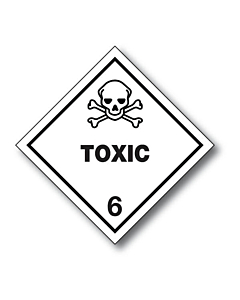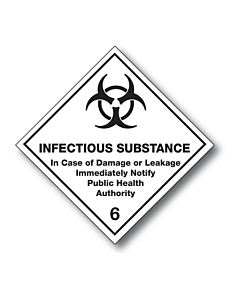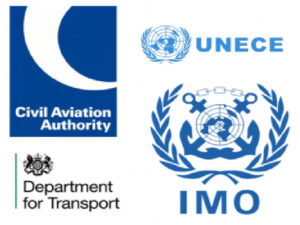Continuing our look at the nine classes of Dangerous Goods with Class 6 Toxic and Infectious Substances.
If you want to read about the other classes check out our previous blogs here.
UN Regulations class products and substances into 9 classes. The regulatory framework for the transport of Dangerous Goods includes the ICAO’s Technical Instructions, IATA’s Dangerous Goods Regulations, UNECE’s International Carriage by Road (ADR) and the IMO’s International Maritime Dangerous Goods Code (IMDG)
Class 6 Toxic and Infectious
This class includes toxic substances that are liable to cause death, serious injury or significant harm to health, and infectious substances that are likely to cause disease to animals and humans.
Commonly transported Class 6 Dangerous Goods include medical and clinical waste and biological cultures and specimens.
Reason for regulation
Toxic materials may cause harm to a human or animal if it enters the body. The route of exposure to enter the body can be swallowing, inhalation or absorption through skin contact.
Toxic materials are often used in the workplace and also in consumer products that go into domestic homes.
Division 6.1 – Toxic Substances

Division 6.1 relates to substances that are poisonous.
Toxic Substances are allocated a packaging group (degree of danger) based on the dosage and route of exposure.
There are 3 ways to be exposed to Toxic Substances:
Oral Ingestion – Normally ingested by taking in a substance through the mouth into the gastrointestinal tract, such as through eating or drinking.
Dermal Contact – Can be absorbed during day-to-day life in the home, at workplaces, in surrounding environments or due to the use of consumer and pharmaceutical products through contact with the skin.
Inhalation – The breathing of dust, mists or mites that have a toxicity level through the atmosphere or vapours.
Toxic Liquids that have a vapour inhalation toxicity with a high degree of danger (Packing Group I) are Forbidden on both passenger and cargo aircrafts.
Examples of Division 6.1 include arsenic, cyanides, rodent bait and chloroform.
Divison 6.2 – Infectious Substances

Division 6.2
Infectious Substances are classified and assigned to UN2814, UN2900, UN3291, UN3373 or UN3549 as appropriate. They are divided into the following Categories:
Category A:
An infectious substance which is transported in a form that, when exposed, can cause permanent disability, life threatening or fatal disease in otherwise healthy humans or animals. Must be assigned to UN2814 Infectious Substance, affecting humans or UN2900 Infectious Substance, affecting animals.
Examples of Category A substances: Ebola, Monkeypox Virus, African Swine fever, Foot and Mouth Disease
Category B: An infectious substance which does not meet the criteria for inclusion in Category A.
Must be assigned to UN3373 Biological substance, category B
Examples of Category B substances: Influenza, Measles, Chicken Pox
Biological Products
Biological products are divided into 2 distinct groups:
a) Biological products that are manufactured, packaged and approved by national authorities, which are for personal healthcare used within the medical profession or individuals are not subject to the Dangerous goods regulations.
b) Biological products believed to contain infectious substances, and which meet the criteria for Category A or B. Must be assigned to UN2814, UN2900 or UN3373 as appropriate.
Examples of Biological Products: Rubella, Rabies Vaccines, Polio Drops
Medical or Clinical Waste
Category A solid waste substances generated from the medical treatment of humans or animals may be assigned to UN3549 Medical waste, Category A, affecting animals or medical waste, Category A, affecting humans. This UN # and proper shipping name must not be used for Bioresearch or Liquid waste. UN2814 or UN2900 must be used as appropriate.
Category B medical or clinical waste or any waste that has a low probability of containing infectious substances. Must be assigned to UN3291 with one of the following proper shipping names:
– Biomedical waste n.o.s
– Clinical waste n.o.s
– Medical waste n.o.s
– Regulated medical waste n.o.s
National authorities will provide further guidance on this.
Infected Live Animals
Should not be used to transport infectious substances unless the infectious substance cannot be carried in any other form. They should not be transported by Air unless approval from the national authority, state or origin, destination and the operator are received.
Patient Specimens
Patient specimens containing infectious substances should be assigned to UN2814, UN2900 or UN3373 as appropriate.
These relate to two categories of substances:
Category A infectious substances that are known or expected to contain micro-organisms that cause disease in humans or animals
Category B are biological substances like virus cultures, pathology specimens and used intravenous needles
If you specifically require training Class 6 Toxic and Infectious Substances, see our course information.




